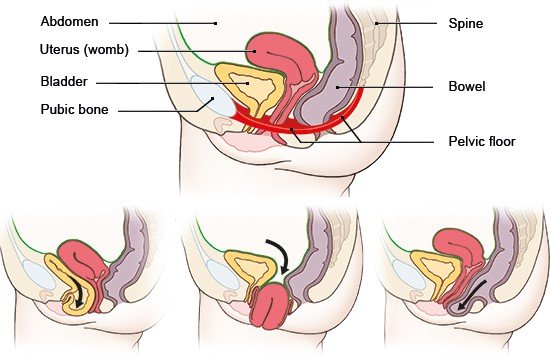Barber MD. Pelvic organ prolapse. BMJ 2016; 354: i3853.
Cattani L, Decoene J, Page AS et al. Pregnancy, labour and delivery as risk factors for pelvic organ prolapse: a systematic review. Int Urogynecol J 2021 [Epub ahead of print].
Deutsche Gesellschaft für Gynäkologie und Geburtshilfe (DGGG), Österreichische Gesellschaft für Gynäkologie und Geburtshilfe (OEGGG), Schweizerische Gesellschaft für Gynäkologie und Geburtshilfe (SGGG). Indikation und Methodik der Hysterektomie bei benignen Erkrankungen (S3-Leitlinie). AWMF-Registernr.: 015-070. 2015.
Deutsche Gesellschaft für Gynäkologie und Geburtshilfe (DGGG). Weiblicher Descensus genitalis, Diagnostik und Therapie (S2e-Leitlinie). AWMF-Registernr.: 015-006. 2016.
Meriwether KV, Antosh DD, Olivera CK et al. Uterine preservation vs hysterectomy in pelvic organ prolapse surgery: a systematic review with meta-analysis and clinical practice guidelines. Am J Obstet Gynecol 2018; 219(2): 129-146.
Samimi P, Jones SH, Giri A. Family history and pelvic organ prolapse: a systematic review and meta-analysis. Int Urogynecol J 2020.
Toye F, Pearl J, Vincent K et al. A qualitative evidence synthesis using meta-ethnography to understand the experience of living with pelvic organ prolapse. Int Urogynecol J 2020; 31(12): 2631-2644.
Vergeldt TF, Weemhoff M, IntHout J et al. Risk factors for pelvic organ prolapse and its recurrence: a systematic review. Int Urogynecol J 2015; 26(11): 1559-1573.
IQWiG health information is written with the aim of helping people understand the advantages and disadvantages of the main treatment options and health care services.
Because IQWiG is a German institute, some of the information provided here is specific to the German health care system. The suitability of any of the described options in an individual case can be determined by talking to a doctor. informedhealth.org can provide support for talks with doctors and other medical professionals, but cannot replace them. We do not offer individual consultations.
Our information is based on the results of good-quality studies. It is written by a team of health care professionals, scientists and editors, and reviewed by external experts. You can find a detailed description of how our health information is produced and updated in our methods.



